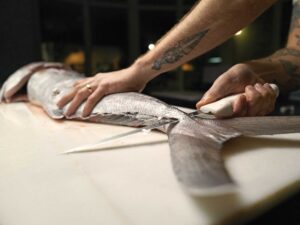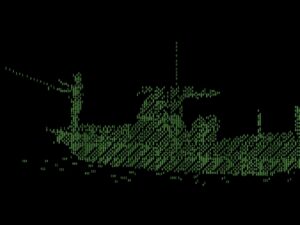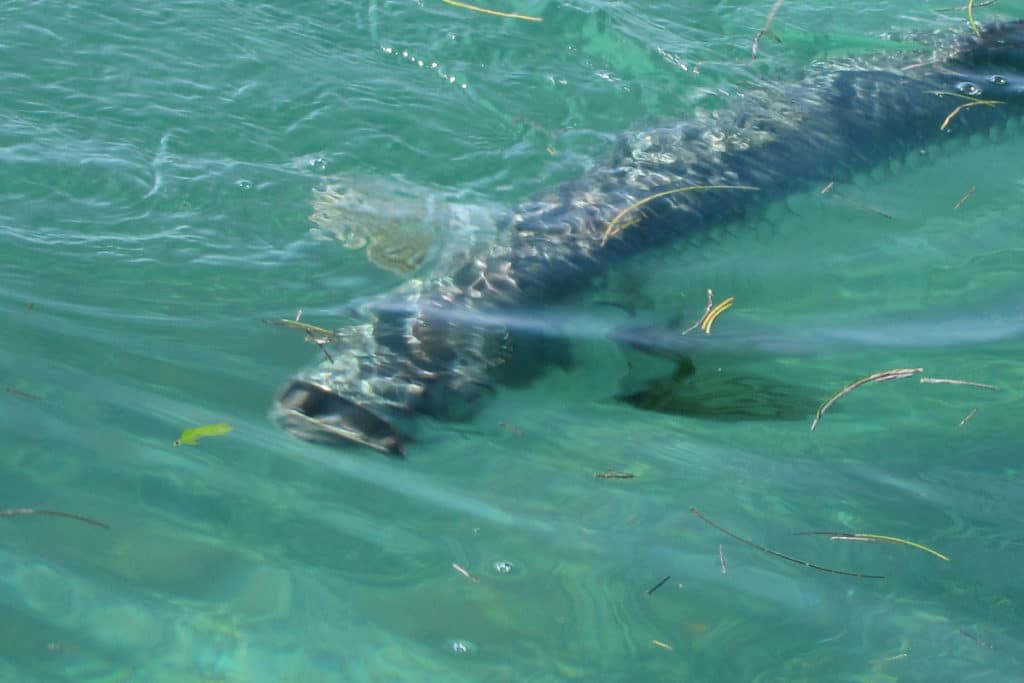
The Cockroach, the Apte Too, the Black Death, and the Purple People Eater are all legendary fly patterns that have been tempting tarpon for decades. More recently, the White Lightning, the Tarpon Shrimp, the Coker Smoker and the Tarpon Toad have been heralded as some of the best tarpon flies by top anglers. While many of those flies continue to produce, new fly-fishing trends develop as time passes, fishing pressure increases, and new fly-tying materials appear on the scene.
Three of the hottest and possible best tarpon flies for the upcoming season include a variation of an old standard and two new patterns that stray from the mainstream tarpon fly designs. Although each differs greatly from the others, they all have one thing in common: tarpon love them!
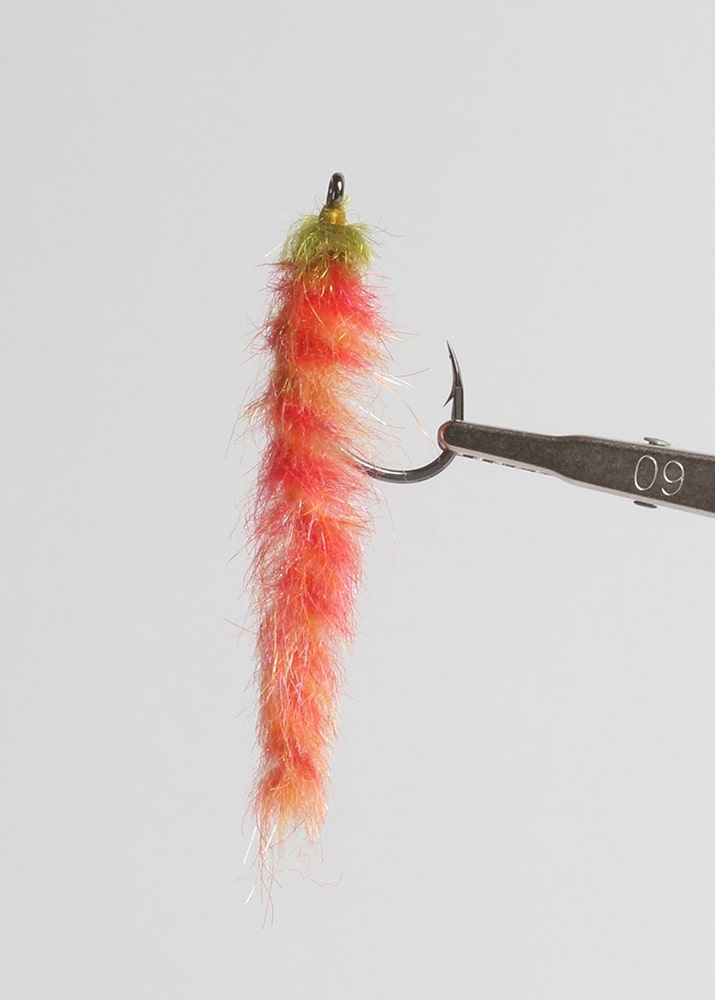
The Chili Pepper Worm
The past few years, many tarpon guides in Islamorada, Key West and the rest of the Florida Keys have been leaning more and more toward worm imitations. This trend was born from the pros’ desire to present something different to fish that have every popular fly pattern thrown at them during their migration along both Florida coasts. And it’s also an attempt to cash in on tarpon’s predilection for a particular invertebrate that begins its annual spawning with a mass exodus from the keys flats, the fabled palolo worm.
The Chili Pepper Worm is an excellent palolo imitation. The color (variegated red and orange body with an olive head), the length (2 inches) and the silhouette (slender when wet) are all spot on. However, the fly is effective whether there’s a worm hatch going on or not. It’s made of EP Streamer Brush, a cool new material from Enrico Puglisi that resembles a disheveled pipe cleaner with a soft stainless wire core that gives the fly sufficient suppleness without the excessive fouling you get with softer materials, like rabbit strip. The recommended hook size is 1/0.
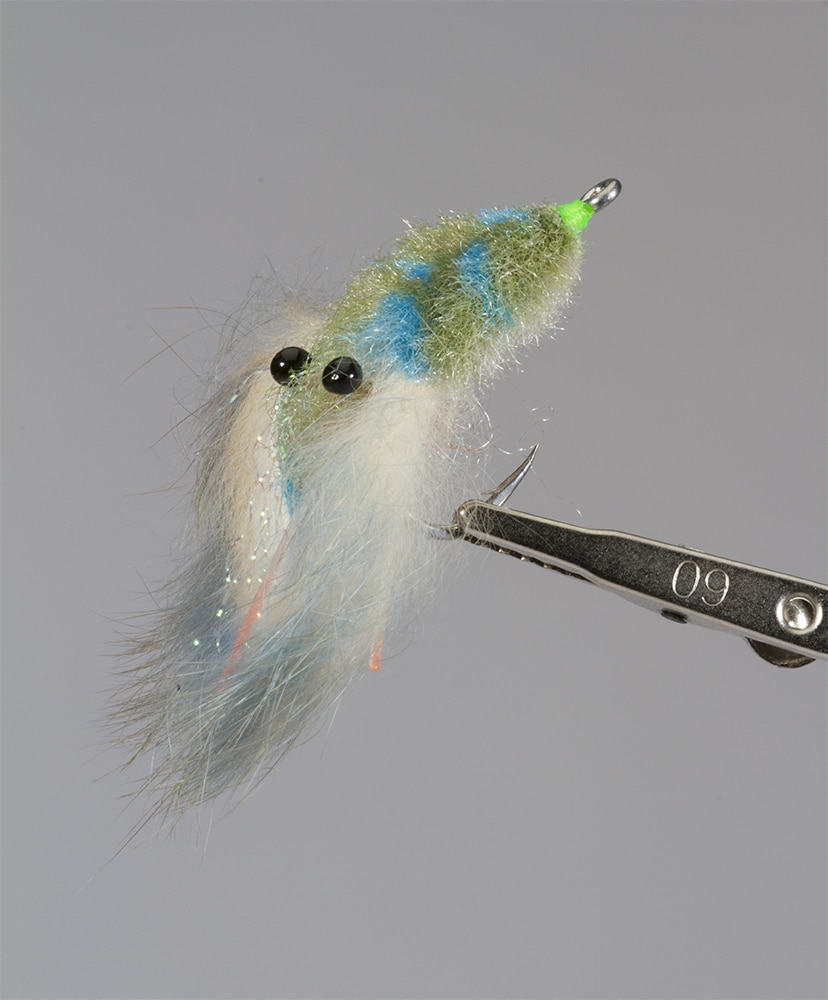
EP Campeche Crab
Crabs are another main source of forage for the silver king, and the EP Campeche Crab is an impressionistic version of said crustacean that incorporates a most appealing swimming action. The body is fashioned from another Enrico Puglisi material — EP Anadromus Brush — and zonker (rabbit) strip is used for the claws that give the fly the seductive undulating that help it pass for a swimming crab.
As is the case with several other fly patterns, the EP Campeche Crab is tied in several color variations, but the tan and olive versions are the most natural and, therefore, will work in most situations.
Although originally designed to target baby tarpon in Mexico’s northern Yucatan, this fly also works very well on the adults in the Florida Keys, the Everglades and Belize. The recommended hook size is 2/0.
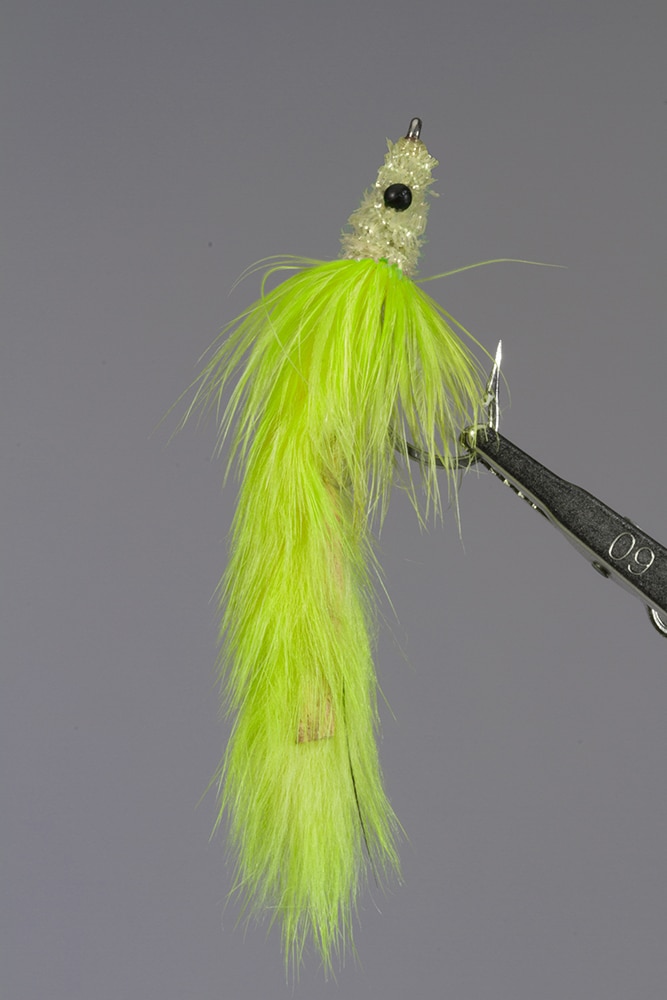
Crystal Tarpon Bunny
Completing the trifecta of the hottest tarpon flies for the upcoming season, a modified version of the revered tarpon bunny that Capt. Wil Flack, seasoned flats fishing guide and owner of Tres Pescados Fly Shop in Ambergris, Belize, considers his go-to fly for targeting silver kings over grass flats in gin-clear water. Many anglers know about using a dark-color tarpon bunny in low light and cloudy water situations, but Flack likes a chartreuse version with palmered grizzly hackle behind a crystal chenille head that gives the fly some flash.
According to Flack, this pattern is easy for the fish to detect, especially over grass bottom, and the suppleness of the material (zonker strip) makes it easy to impart a seductive action with minimal effort. We should point out that this fly is not only productive in Belize, it’s also ideal for tarpon throughout the Florida Keys and along the beaches, as well as in several bays in the Yucatan where the water isn’t very tannic.
The best all-around hook size is 1/0, and Flack warns that it’s crucial to have a rear mono loop (40-pound test) protruding off the back of the hook to minimize fouling of the rabbit strip tail. “It can make the difference between a refusal and a mind-blowing hookup,” he explained.



